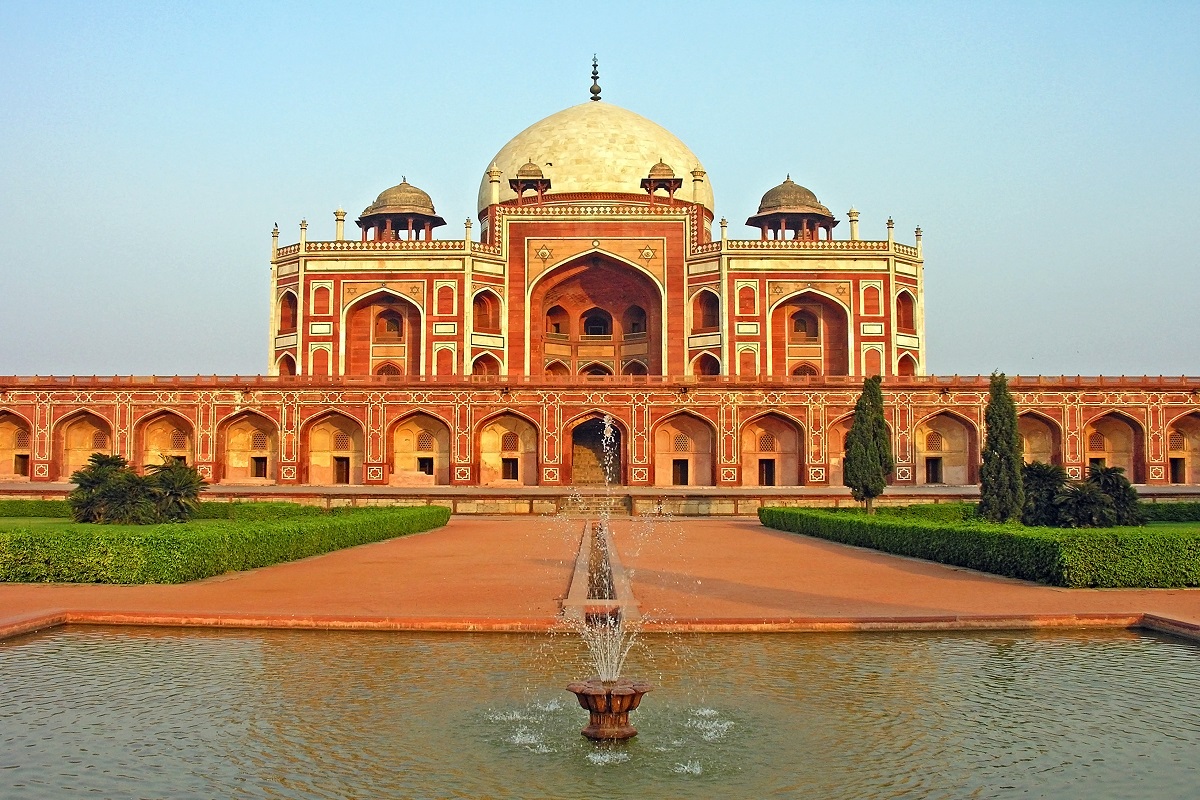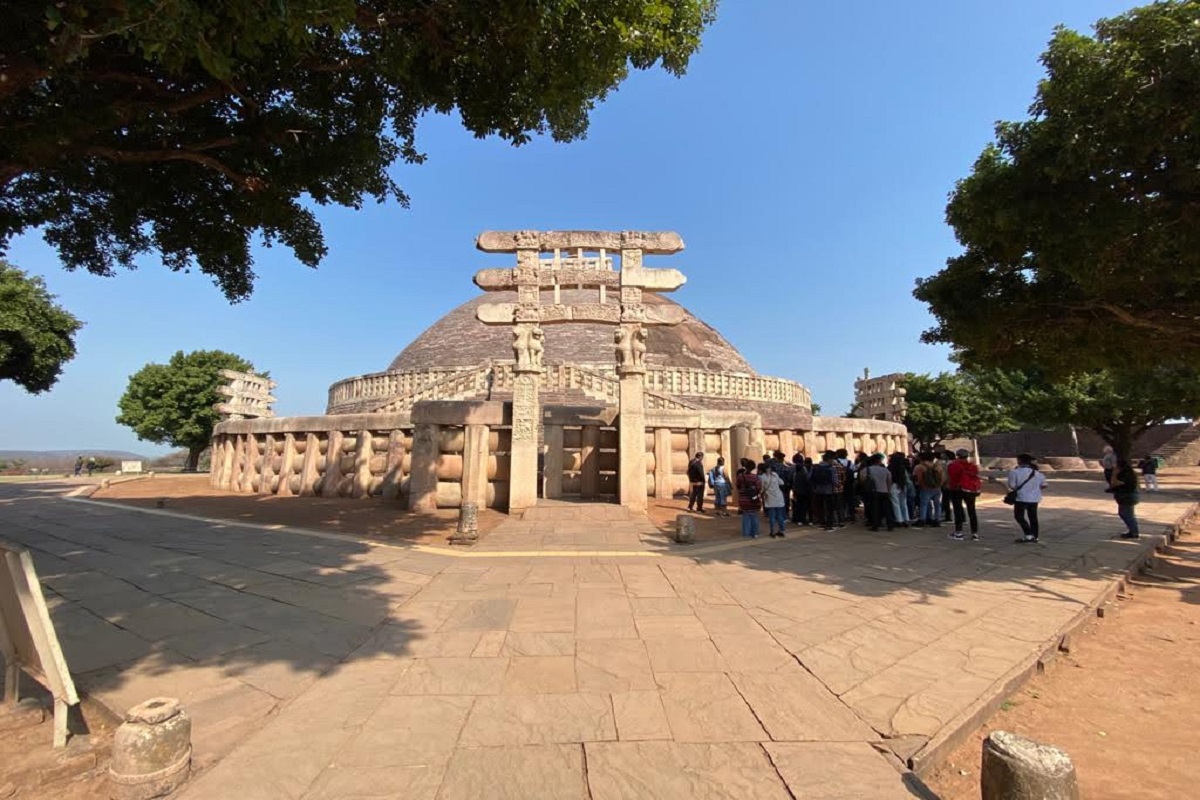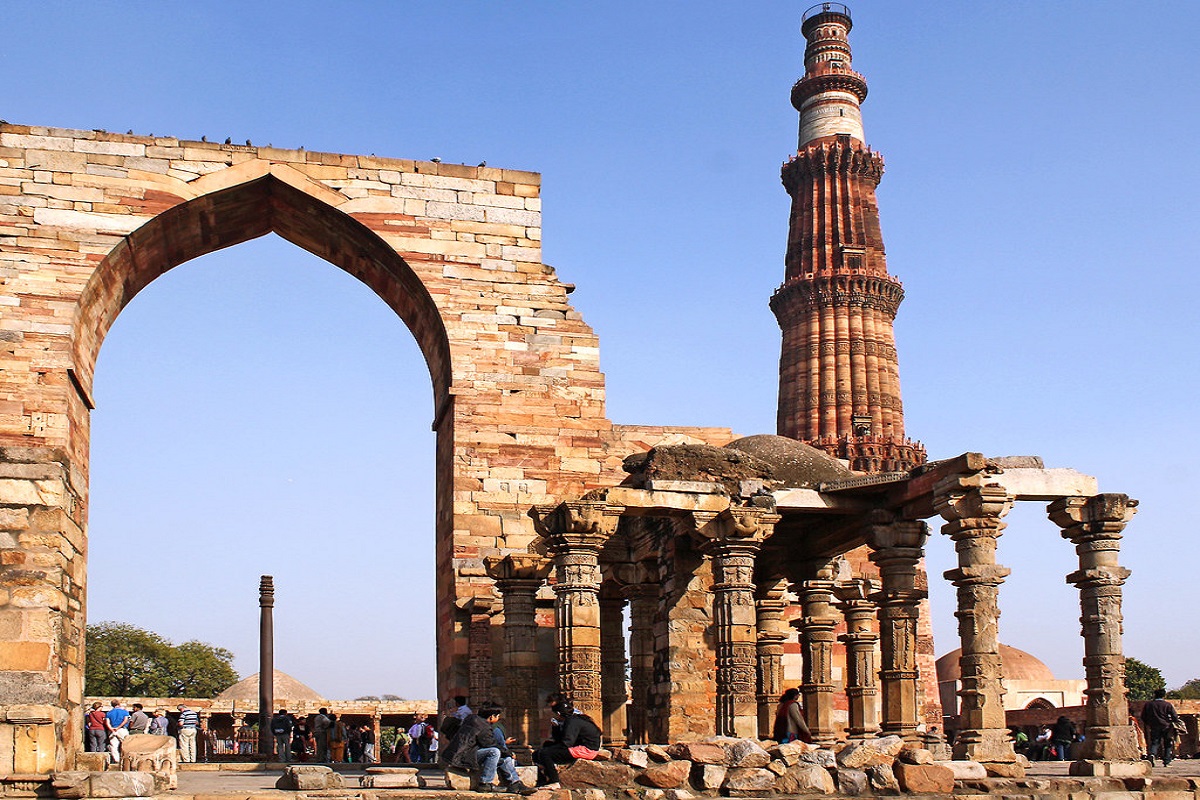Jantar Mantar is the most popular tourist attractions in New Delhi. As the name suggest it is an instrument for measuring the harmony of the heaven. The Jantar Mantar is an equinoctial sundial that consists of a triangular gnomon along with hypotenuse that runs parallel to the axis of the Earth.
On both sides of the gnomon is a quadrant of a circle that runs parallel to the equator plane. The instrument was created so that the time of the day could be measured on the basis of the inclination and position of the heavenly body and the sun. Initially in India there were four Jantar Mantars, the largest of which was in Jaipur. However just before the revolt of 1857 the one at Mathura was torn down.
Currently there are only four Jantar Mantar in India. They are in New Delhi, Ujjain, Jaipur and Varanasi. The Jantar Mantar in Delhi has the main purpose to compile astronomical tables tell the time on the basis of the movement of the moon the sun and the planets. Naturally it forms a part of the science of astronomy.
Who Built The Jantar Mantar
It was Maharaja Jai Singh II of Jaipur who had built all the five Jantar Mantar and hence the one at Delhi too. The work of construction began from 1723. The main purpose was to revise the calendar and the astronomical tables with the use of these structures. Maharaja Jai Singh was born in a royal Rajput family in 1688 and was a popular ruling figure in the regional Kingdom. He was born into a period of education and had sincere interest in Astronomy. The main purpose of these observatory buildings was to compile astronomical table and predict the time on the basis of the movement of the sun moon and other planets.
Jantar Mantar timings
From the very beginning Jantar Mantar happens to be a construction or a building structure which was meant for astronomical prediction and observation purposes. Even in the current times Jantar Mantar in Delhi happens to be a popular attraction for children, history buff and experience seeking travelers. This is why Jantar Mantar is open all round the week. You can visit this astronomical observatory place anytime of the week even on the weekend. The place is open on national and public holidays as well. You can visit Jantar Mantar in Delhi any time between morning 6 a.m. and 6 p.m. in the evening.
Jantar Mantar Information
There are four instruments within the observatory of Jantar Mantar in New Delhi. They are the Samrat yantra, the Jaiprakash, the Rama yantra and Mishra Yantra. The Samrat Yantra is also stated to be the supreme instrument. This is a giant triangle which is equal to an hour of the sundial. The structure is 70 feet high and 114 feet long at its base. It is about 10 feet in thickness and it has a 39 long hypotenuse which is parallel to the axis of the Earth. This hypotenuse points towards the North Pole. The Jayaprakash Yantra consists of a couple of hemispheres which are basically hollow that has several marking on their concave side. Crossed wires have been stretched between the various points present on the rim of this hemisphere.
An observer from inside the RAM can actually aligned the position of any star with different marking that can be done on the edges of the window. This instrument is considered to be one of the most complex and versatile one that can actually give real time quote between multiple systems and celestial object. The third very important instrument is the Rama yantra. It consists of a couple of large cylindrical structure that happens to be open at the top. These structures are used for the measurement of the star’s altitude based on the longitude and latitude on the earth. The last instrument that we will talk about is the Mishra Yantra. This instrument literally means a mixed instrument. You can find nearly five instruments mix to form a single tool in this Yantra. This tool is required to determine the longest and shortest days of the year. This tool can also be used to find out the exact moment of mid-day or noon which is to happen in various cities of the country.
Where is the jantar mantar & How to Reach
Jantar Mantar in Delhi is an astronomical marvel which is located in the heart land of the city near Connaught Place. Hence to visit this astronomical wonder you first need to come down to Delhi. Now this should not be a problem as Delhi being the national capital is very well connected to all the other parts of the nation.
You can easily come down to Delhi using the networks of flights and Railway. There are several direct flights and trains to Delhi which can bring you to the city from any part of India. Once in Delhi all you need to do are take a taxi or a bus service or a metro and get down to the centre of the city. This is all that is needed for you to come down to Jantar Mantar in Delhi. Being one of the most popular tourist attractions of the city you can easily find your way to the destination. The Patel Chauk happens to be the closest metro station to Jantar Mantar. You can also get down at Rajiv Chowk which is just about 5 minutes away from the observatory.
The nearest bus stand is Palika Kendra which is just two kilometres away from Jantar Mantar. The Sansad mark is the second nearest bus stand to Jantar Mantar in Delhi. The New Delhi railway station is just two kilometres away from Jantar Mantar. The Indira Gandhi International Airport is about 15 kilometres away from the destination.
Jantar Mantar Ticket & Entrance Fee:
The entrance fee to Jantar Mantar is really nominal. The Indian tourists must pay Rs 15 as their entry fee where as foreigners will have to pay Rs 200 as their entry fee. Tourists from the SAARC on the BIMTEC countries also need to pay Rs 15 as their entry fee if you are looking forward to do still photography you can easily carry a camera without any extra entry fee. However if you’re looking for video photography you need to pay another extra fee of Rs 25. You can book the tickets online for your entry to Jantar Mantar. You can also buy the tickets when you are on the venue. However buying the ticket earlier from online platform is a better idea as it is a much easier option and you can dodge the long queues as well.
About Jantar Mantar & Important Structures
Early man the discussion it has been mentioned that Raja Jay Singh was quite a learned person and had much interest in Astronomy. The sole purpose behind building the Jantar Mantar was to re-evaluate the Islamic calendar. The Jantar Mantar word created to get a better understanding of time evaluation on the basis of planetary movement. These structures were supposed to give an accurate observation of celestial bodies and other astronomical phenomena. This red structure has a total height of 720 feet or 220 meters. It consists of a number of Yantra. The four main instruments are the samrat yantra, Jayaprakash yantra, the Rama yantra and the Mishra yantra. There also happens to be the other yantras like the Shasthana yantra, kapala yantra and the Rasivalya Yantra.
Best time to visit jantar mantar
Like all other tourist attractions in Delhi the best time to visit Jantar Mantar is during the winter Season. The months between November and February happens to be the most favorable time to visit the Jantar Mantar in Delhi. The summers in Delhi happens to be really quiet scorching. Observing the Jantar Mantar means staying out doors for hours. Doing so in the peak summers can be really quite uncomfortable! Hence the best thing to do is to visit the place during the autumn winter and spring season.
Jantar Mantar History
This astronomical construction was created on the basis of the Ancient education dolomite structure. This design follows the celestial orders of the ecliptic, the equatorial, The Horizon & then its local arrangement. The name Jantar Mantar is more than 200 years old as mention of the term can be found in the document written back in 1803. Initial the word happened to be Jantra which meant an instrument. The word Jantar is but a corrupted version of the original term. The word Jantar Mantar is basically synonymous to making calculations.
Attractions nearby jantar mantar
Delhi has a plethora of tourist attractions strewn all across the city. The national capital is more or less a labyrinth of historical tourist destinations. Some of the popular ones are the Delhi fort, the Humayun’s tomb, the Lotus temple, the India Gate, the Qutub Minar, The Gurudwara Bangla Sahib, Jama Masjid, Akshardham, Purana Qila, Rajpath and Rashtrapati Bhavan, Mahatma Gandhi Memorial, Indira Gandhi Memorial Museum, the national Museum New Delhi, Laxmi Narayan temple, the National Zoological Park, the craft museum, the national Rail Museum, the Hauz Khas complex, etc.







